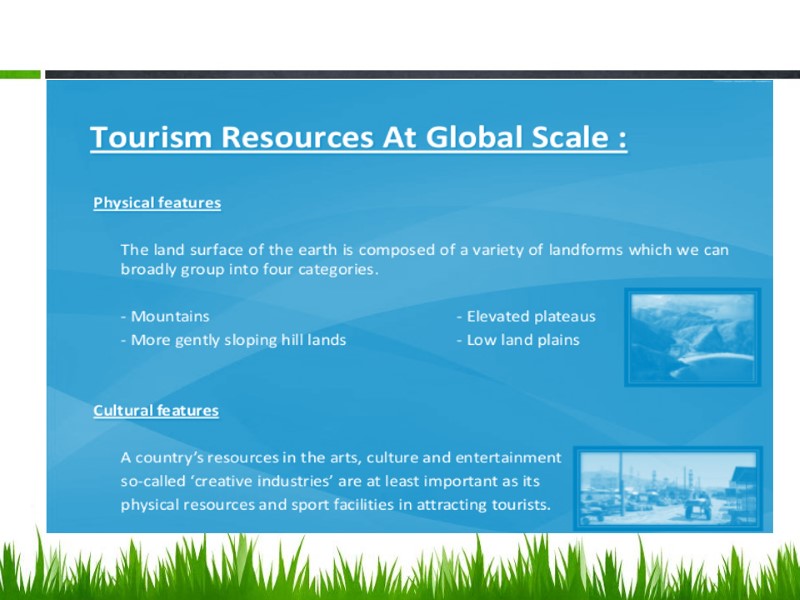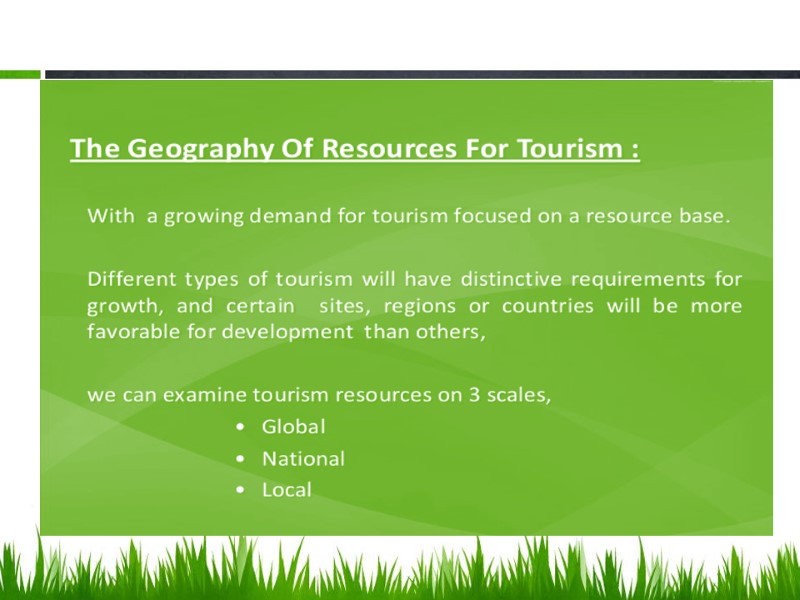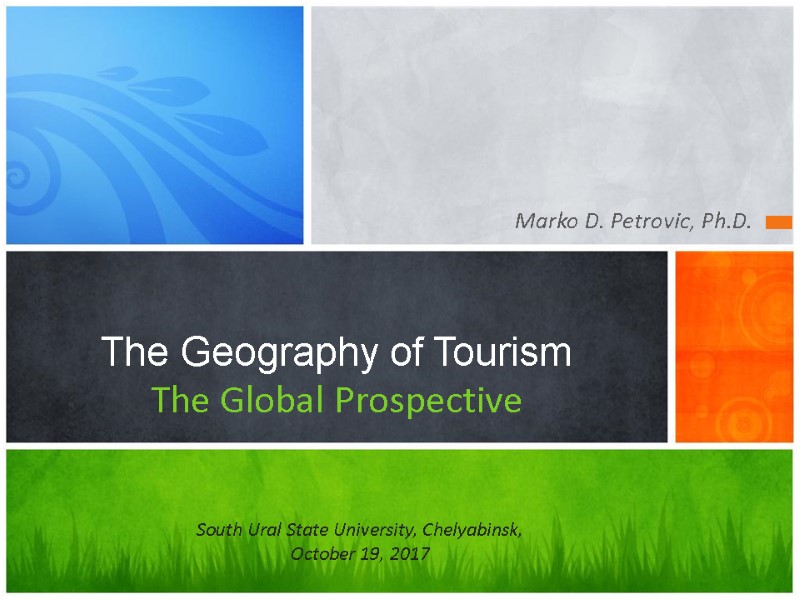 Marko D. Petrovic, Ph.D. The Geography of Tourism The Global Prospective South Ural State University, Chelyabinsk, October 19, 2017
Marko D. Petrovic, Ph.D. The Geography of Tourism The Global Prospective South Ural State University, Chelyabinsk, October 19, 2017
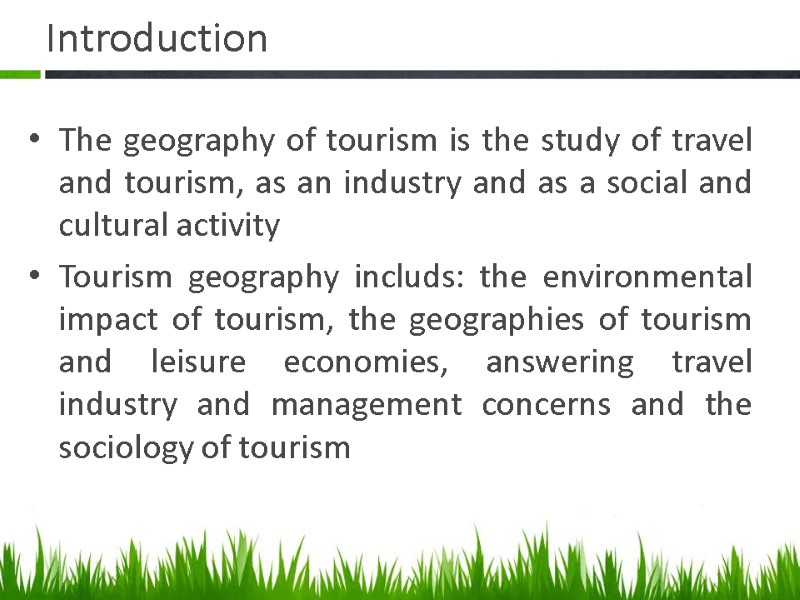 Introduction The geography of tourism is the study of travel and tourism, as an industry and as a social and cultural activity Tourism geography includs: the environmental impact of tourism, the geographies of tourism and leisure economies, answering travel industry and management concerns and the sociology of tourism
Introduction The geography of tourism is the study of travel and tourism, as an industry and as a social and cultural activity Tourism geography includs: the environmental impact of tourism, the geographies of tourism and leisure economies, answering travel industry and management concerns and the sociology of tourism
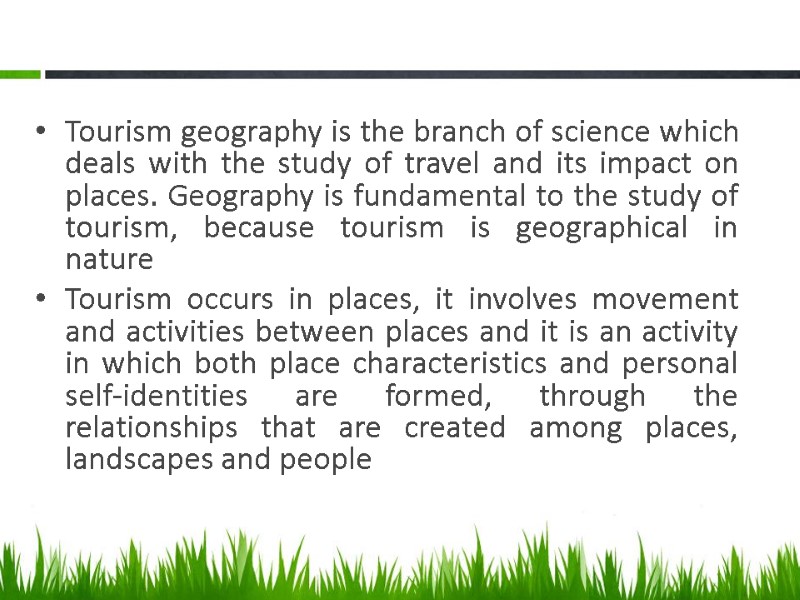 Tourism geography is the branch of science which deals with the study of travel and its impact on places. Geography is fundamental to the study of tourism, because tourism is geographical in nature Tourism occurs in places, it involves movement and activities between places and it is an activity in which both place characteristics and personal self-identities are formed, through the relationships that are created among places, landscapes and people
Tourism geography is the branch of science which deals with the study of travel and its impact on places. Geography is fundamental to the study of tourism, because tourism is geographical in nature Tourism occurs in places, it involves movement and activities between places and it is an activity in which both place characteristics and personal self-identities are formed, through the relationships that are created among places, landscapes and people
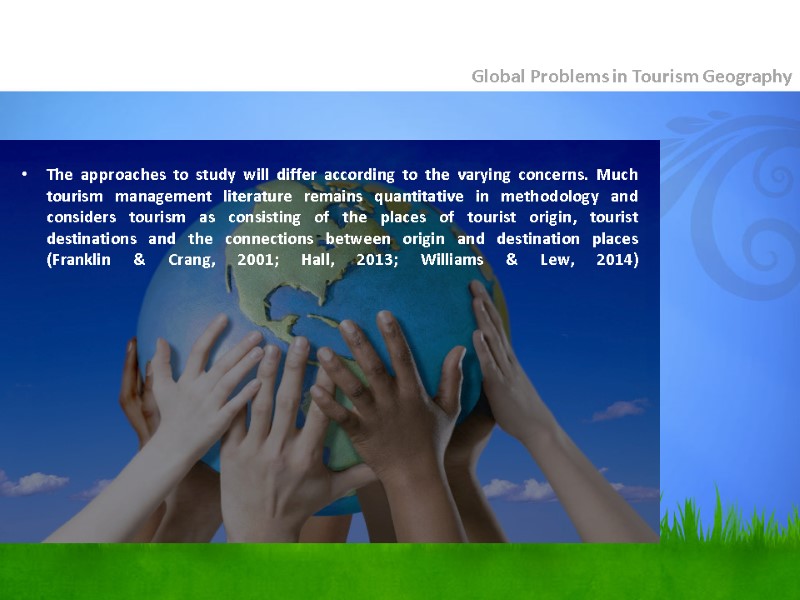 The approaches to study will differ according to the varying concerns. Much tourism management literature remains quantitative in methodology and considers tourism as consisting of the places of tourist origin, tourist destinations and the connections between origin and destination places (Franklin & Crang, 2001; Hall, 2013; Williams & Lew, 2014) Global Problems in Tourism Geography
The approaches to study will differ according to the varying concerns. Much tourism management literature remains quantitative in methodology and considers tourism as consisting of the places of tourist origin, tourist destinations and the connections between origin and destination places (Franklin & Crang, 2001; Hall, 2013; Williams & Lew, 2014) Global Problems in Tourism Geography
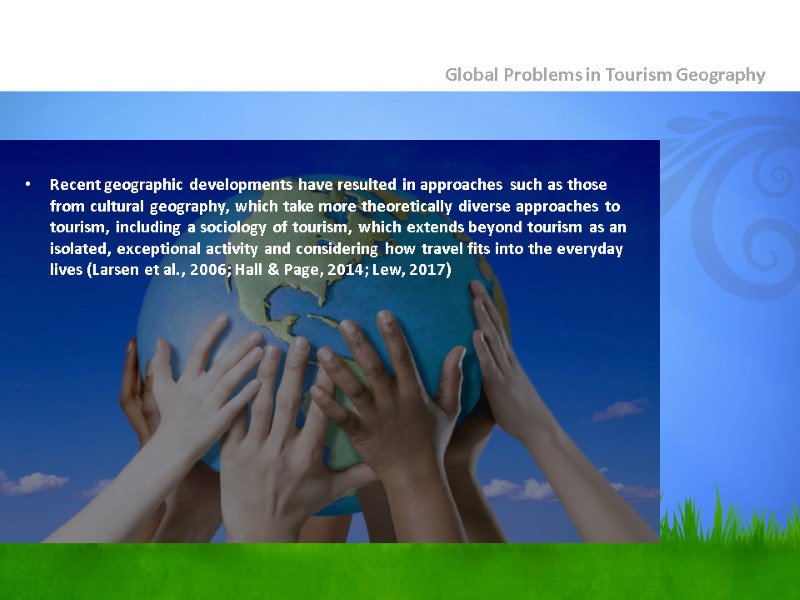 Recent geographic developments have resulted in approaches such as those from cultural geography, which take more theoretically diverse approaches to tourism, including a sociology of tourism, which extends beyond tourism as an isolated, exceptional activity and considering how travel fits into the everyday lives (Larsen et al., 2006; Hall & Page, 2014; Lew, 2017) Global Problems in Tourism Geography
Recent geographic developments have resulted in approaches such as those from cultural geography, which take more theoretically diverse approaches to tourism, including a sociology of tourism, which extends beyond tourism as an isolated, exceptional activity and considering how travel fits into the everyday lives (Larsen et al., 2006; Hall & Page, 2014; Lew, 2017) Global Problems in Tourism Geography
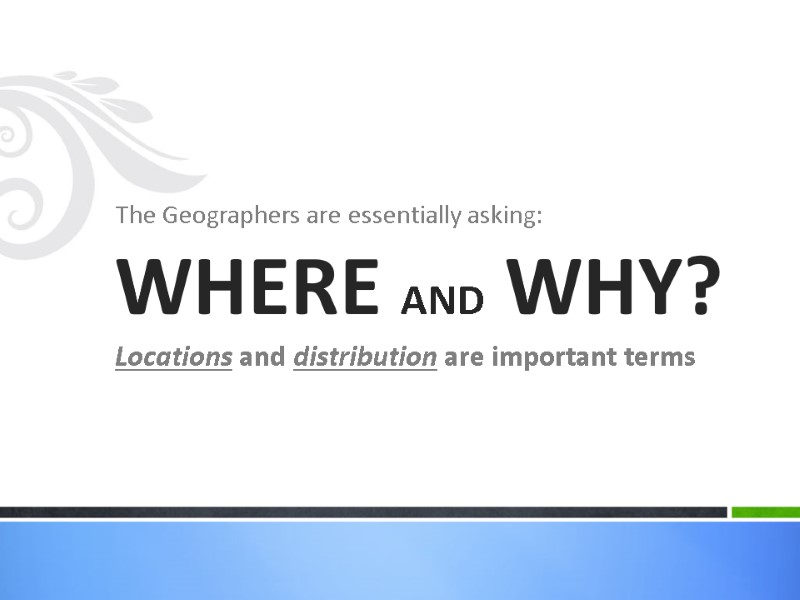 The Geographers are essentially asking: WHERE AND WHY? Locations and distribution are important terms
The Geographers are essentially asking: WHERE AND WHY? Locations and distribution are important terms
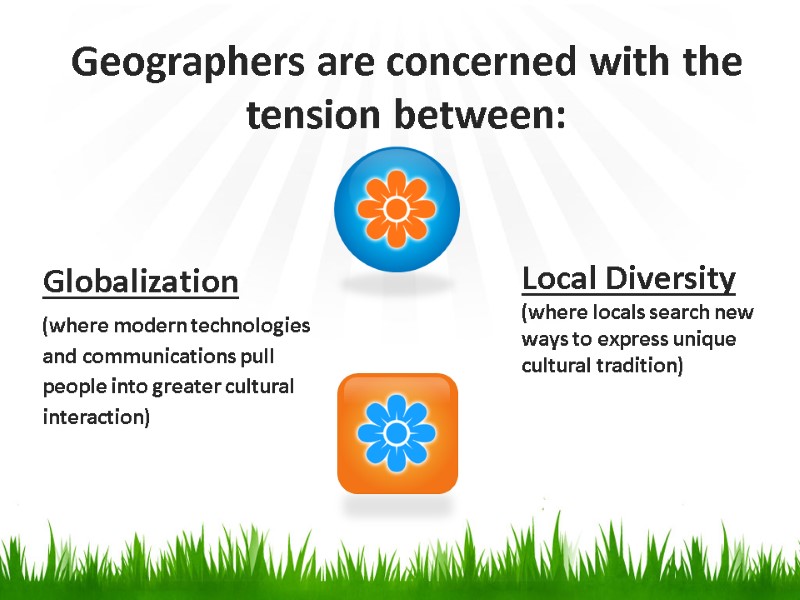 Globalization (where modern technologies and communications pull people into greater cultural interaction) Local Diversity (where locals search new ways to express unique cultural tradition) Geographers are concerned with the tension between:
Globalization (where modern technologies and communications pull people into greater cultural interaction) Local Diversity (where locals search new ways to express unique cultural tradition) Geographers are concerned with the tension between:
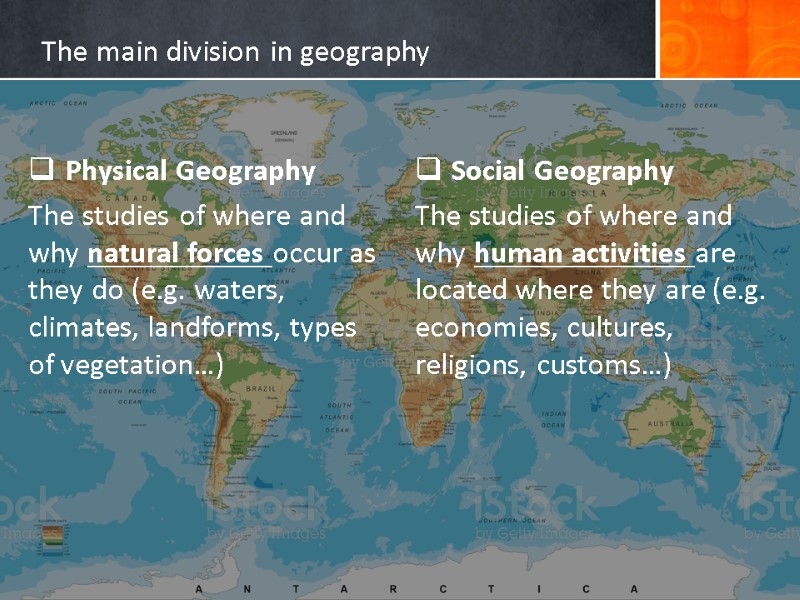 The main division in geography Physical Geography The studies of where and why natural forces occur as they do (e.g. waters, climates, landforms, types of vegetation…) Social Geography The studies of where and why human activities are located where they are (e.g. economies, cultures, religions, customs…)
The main division in geography Physical Geography The studies of where and why natural forces occur as they do (e.g. waters, climates, landforms, types of vegetation…) Social Geography The studies of where and why human activities are located where they are (e.g. economies, cultures, religions, customs…)
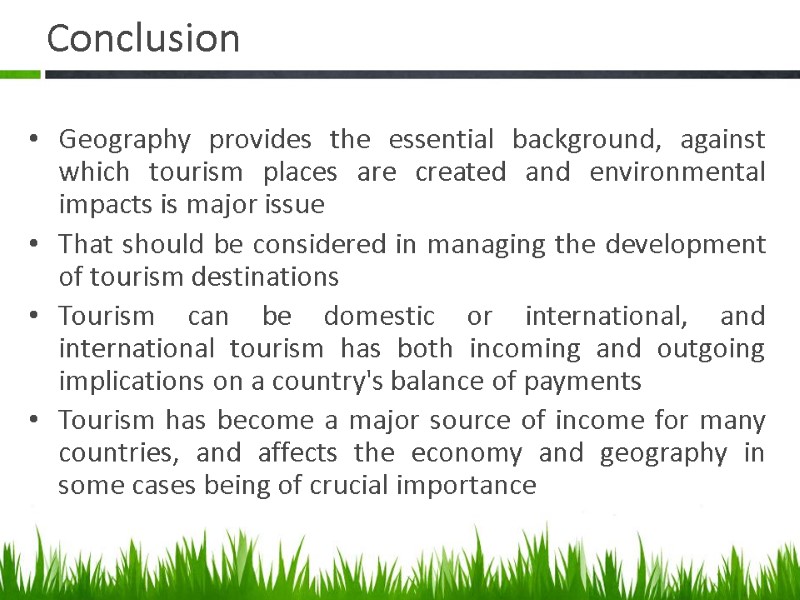 Conclusion Geography provides the essential background, against which tourism places are created and environmental impacts is major issue That should be considered in managing the development of tourism destinations Tourism can be domestic or international, and international tourism has both incoming and outgoing implications on a country's balance of payments Tourism has become a major source of income for many countries, and affects the economy and geography in some cases being of crucial importance
Conclusion Geography provides the essential background, against which tourism places are created and environmental impacts is major issue That should be considered in managing the development of tourism destinations Tourism can be domestic or international, and international tourism has both incoming and outgoing implications on a country's balance of payments Tourism has become a major source of income for many countries, and affects the economy and geography in some cases being of crucial importance
 What’s Your Message? THANK YOU FOR YOUR ATTENTION! All questions or suggestions regarding this presentation you may send at: [email protected] South Ural State University, Chelyabinsk, October 19, 2017
What’s Your Message? THANK YOU FOR YOUR ATTENTION! All questions or suggestions regarding this presentation you may send at: [email protected] South Ural State University, Chelyabinsk, October 19, 2017








